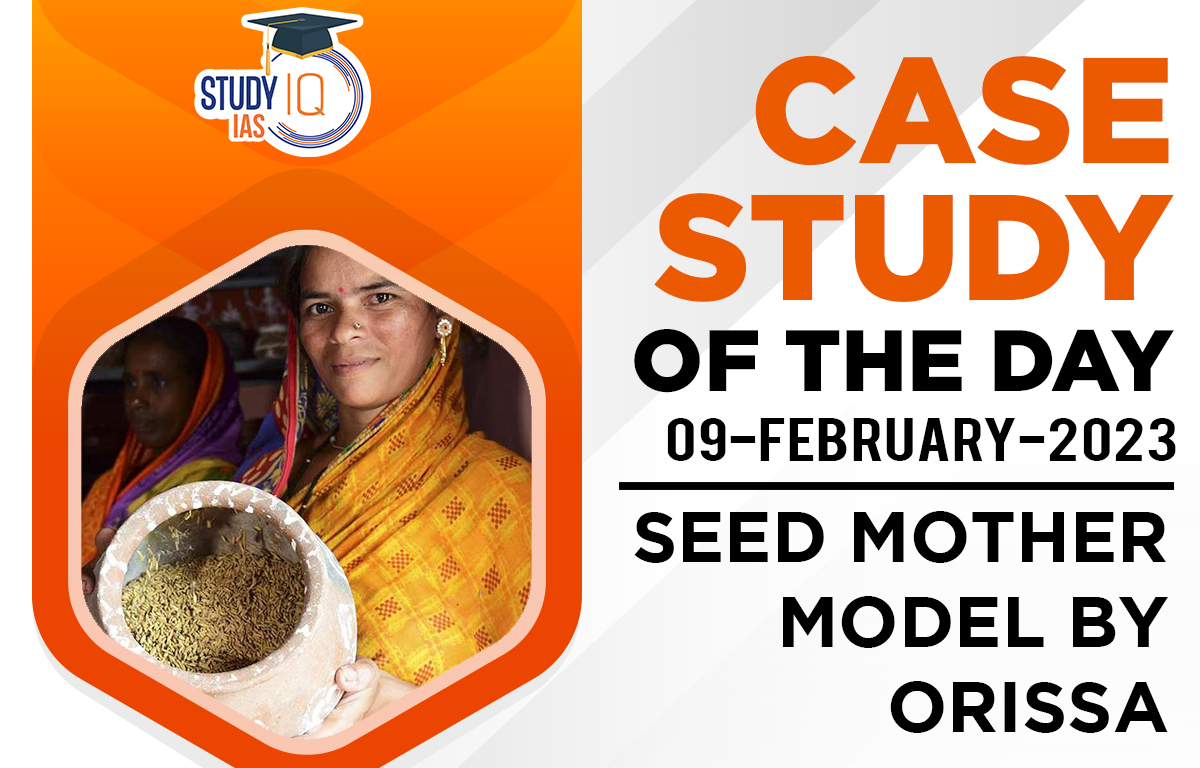Table of Contents
Seed Mother Model by ORISSA Background
- The Adivasi communities of Odisha, after repeated failures in making families’ food secure, considered the advice of Elder Adivasi Farmers to help revive the traditional forms of agriculture, which lead to Adivasi People’s Organizations identifying resourceful Adivasi women in the villages and terming them as Seed Mothers.
About Seed Mother Model in Orissa
- Initial challenges include:
- Bring dignity to the local seeds and practices associated.
- Add objective value to the traditional practices in the minds of young farmers.
- The initiatives taken up by Seed Mothers include:
- Organise annual Village Level Seed Mapping at the community level.
- Community Biodiversity Mapping, where the critical role and importance of local forests is appreciated in the mapping exercise for its role in supporting traditional agriculture, along with provisioning uncultivated forest food and income from the non-timber forest products that the community can freely access.
- Seed Multiplication through seed exchanges, and by creating seasonal nurseries to raise saplings.
- Pure Seed Production process is done through selection (Pure Line Selection) which happens by marking the plants and branches which show healthy growth, uniform grains and the capacity of holding more grains.
- Nurturing seeds, by ensuring proper pest management, seed storage, and implementing crop management plans.
- Significance:
- It has made it possible to organise a community Seed Fair, which brings together hundreds of Adivasi farmers to spread their knowledge and awareness of traditional seeds, to exchange seed varieties with other farmers, and importantly, to reduce dependence on markets for agricultural seeds by promoting the use of traditional varieties.
- The workaround conservation of diverse cropping systems has inspired the farming community to understand the importance of the forest for their crop fields and for the day-to-day life of the Adivasi community.
- The families now grow earlier lost varieties of crops, to sell at the market to receive cash income for the families.
- Also, the Seed Mothers brought in seven varieties of millet and nine varieties of pulses to enrich the family farms to produce food for the families.
- At a time of Agriculture Commercialisation, it becomes imperative to preserve our traditional farming systems, while only adapting to the necessary changes, to make agriculture sustainable.


 Unlocking the Potential of India–Afric...
Unlocking the Potential of India–Afric...
 Southern Ocean Carbon Anomaly: Why the W...
Southern Ocean Carbon Anomaly: Why the W...
 Speedy Justice and the Crisis in Consume...
Speedy Justice and the Crisis in Consume...

























